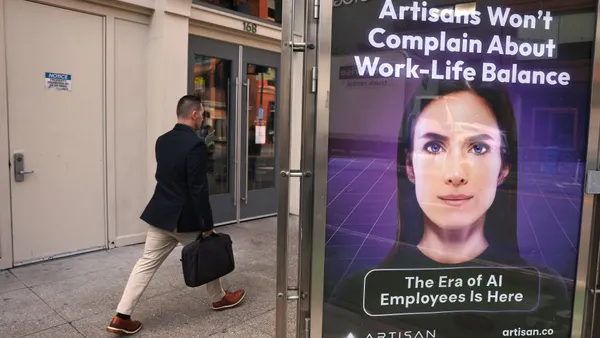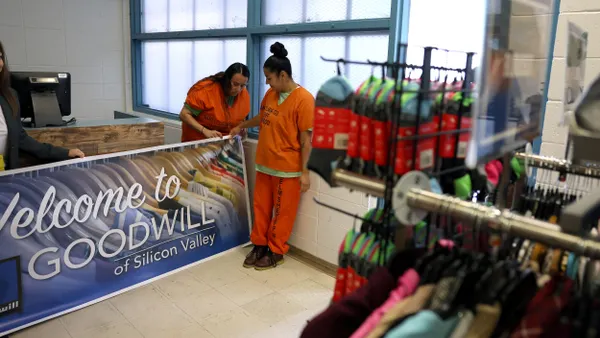Dive Brief:
- Full-time remote work will likely become much more pervasive after the pandemic, Willis Towers Watson (WTW) concluded based on survey results published May 21. While the percentage of employees working remotely will likely drop from its current 53% to 22% after the pandemic passes, that is still more than three times higher than last year’s 7%, the organization said.
- Nearly three in four employers have made adjustments to how employees work in response to COVID-19, WTW said; among other things, employers have installed touchless pay systems, offered video services as opposed to in-person interactions, created more space in typically tight-packed workplaces and shifted work schedules to limit employee contact.
- Some employers also began relying more on gig workers and contract workers for jobs that used to be completed by employees, WTW noted.
Dive Insight:
As states and cities reopen after mass shutdowns, employees say they remain concerned about exposure to COVID-19 on the job, an April survey from Eagle Hill Consulting revealed, and many employers have made changes to accommodate those worries.
In the Eagle Hill survey, employees said that access to protective equipment, such as masks and hand sanitizer; access to COVID-19 testing; and mandates that those who test positive must stay home would ease their fears about returning. While most employees in that survey said they felt confident about their employer’s ability to bring them back safely, employers may still be grappling with what that plan will ultimately look like. As of a study published at the end of April by Blank Rome, only 26% of organizations surveyed had a complete plan in place. Most (56%) were in the process of planning.
Remote work has remained one of the most widespread adaptations to the pandemic, as WTW noted. The move required some employers to adjust technology use, but that’s not all it takes to create an effective remote work policy, experts previously told HR Dive. A company’s "norms" and expectations may also need to shift to accommodate not only the changes wrought by COVID-19 but the natural changes that take place when teammates do not work in the same room. Having a unified communication tool, for example, and standardizing how it is used could go a long way, one expert said.
Employers with workforces that can’t remain remote may be interested in contract tracing tools, which vendors are beginning to offer. Kronos unveiled its own version of the tech at the end of April — a tool that can analyze labor records and attendance data to see which co-workers could be affected if an employee is confirmed positive for COVID-19, according to a release.










